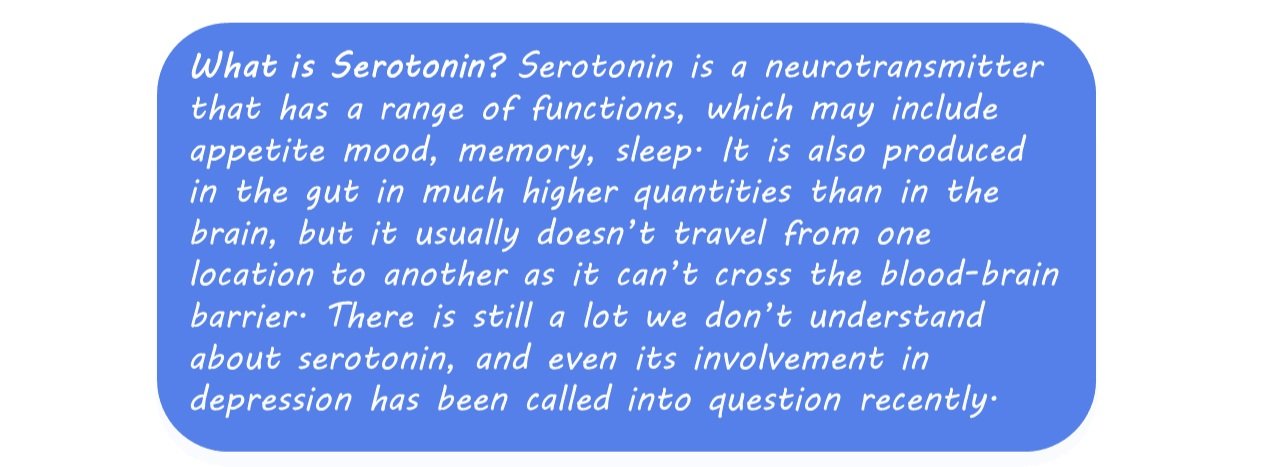Can Psychedelics Treat Depression?
Post by Anastasia Sares
The takeaway
Recently, there has been rising interest in the possible therapeutic applications of psychedelics. This interest stems from evidence that psychedelic-assisted psychotherapy has been helpful for some people with treatment-resistant depression and other mental health conditions. However, psychedelics can also have negative side effects and require intensive doctor supervision. Thus, scientists are on the hunt for new molecules that might have more therapeutic effects and fewer prohibitive side effects. This week in Nature Neuroscience, Kwan and colleagues reviewed old and new research on the biological mechanisms of psychedelics, providing a resource for future pharmaceutical research.
Getting psychedelics into the brain
To exert their effects on the brain, psychedelic molecules must first get there. This is not an easy task, as the brain and its surrounding fluid are separated from the rest of the body by the blood-brain barrier. The cells of the blood-brain barrier are bound together by tight junctions that prevent molecules from squeezing between them, as they would in the rest of the body. Instead, molecules wanting to get to the brain must cross into these barrier cells and then back out on the other side. Thus, small molecules that are somewhat soluble in both water and fatty cell membranes are best suited to get into the brain, and psychedelics fit these criteria.
Pretending to be serotonin
Once in the brain, psychedelics bind to serotonin receptors, mimicking the action of serotonin itself. There are two important sites on the serotonin receptor that the psychedelic activates: the binding pocket, which receives the nitrogen end of the psychedelic molecule, and a hydrophobic region (a region that repels water), which lines up with a ring of carbons in the psychedelic molecule. These two regions need to be spanned by a distance of exactly two carbons, or the receptor and the molecule won’t line up. In addition, if the carbon ring is free to spin around relative to the nitrogen, the molecule will be less efficient in binding to the receptor, so rigid structures are more effective. LSD is an example of one of these rigid molecules.
What are the effects on neurons?
What happens in the brain when a psychedelic activates a serotonin receptor? There are many different serotonin receptors in the brain, some of which increase neuronal firing while others may decrease it. Overall, the effect of a psychedelic in each region of the brain could depend on the ratio of these different types of serotonin receptors. For example, a number of studies have found that activity in the visual pathway is decreased, while others have suggested that activity in the frontal lobe may increase.
Psychedelics can also increase the presence of molecules related to brain plasticity (the ability of the brain to rewire itself). They can also alter the number of neuronal spines (small protrusions from the dendrites that help the neurons make connections) on neurons. This is generally seen as positive and it may be the reason why therapy with psychedelics can help people with treatment-resistant depression: the therapy and plasticity may work together to reshape a person’s thought patterns. However, not all plasticity is good—there can also be maladaptive plasticity, so it will be important to research this phenomenon in more detail.
Finally, psychedelics may also stimulate non-serotonin receptors, changing levels of other neurotransmitters like dopamine or glutamate, and even in some cases causing cardiac problems (as has been reported in chronic MDMA users).
What are the effects on brain networks?
By the time we arrive at the level of brain networks, the exact mechanisms of psychedelics are much less clear. There are multiple, sometimes contradictory, models of psychedelic action. Some common elements include increased connectivity of the thalamus (a deep brain structure involved in controlling input from different senses) and fragmentation of association cortices (linking information from one brain region to another).
Moving forward
To arrive at effective psychedelic-based therapies, scientists must work to understand what exactly about these compounds is therapeutic. Are the hallucinogenic effects completely independent from the pathways that increase neural plasticity (and if so, could we make a non-hallucinogenic molecule that still has therapeutic benefits)? Or, are the hallucinogenic and the therapeutic activity one and the same?



